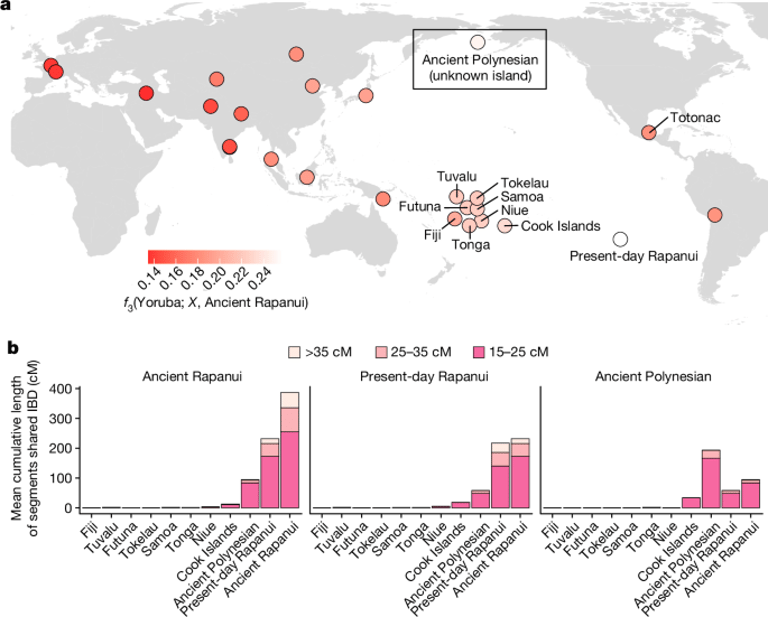New Study Reveals Ancient Rapanui Thrived, Debunks Collapse Myths
September 11, 2024
A recent study published in 'Nature' reveals that the ancient Rapanui people had approximately 10% Native American ancestry, indicating historical contact between Rapa Nui and indigenous populations from South America.
The research involved collaboration among scientists from various institutions, including the Max Planck Institute for Evolutionary Anthropology, and was conducted with input from Rapa Nui officials and community members.
This research, led by Víctor Moreno-Mayar from the University of Copenhagen, analyzed the genomes of 15 individuals from Easter Island who lived between 1670 and 1950, reconstructing the genomic history of the island's inhabitants.
The findings challenge the long-held belief that Rapa Nui's civilization collapsed due to ecological destruction, overpopulation, or cannibalism, suggesting instead that the population remained stable and culturally resilient until European contact.
Genetic analysis indicates that the island's population did not experience a collapse due to deforestation or resource overexploitation in the 1600s, contradicting previous theories.
The study suggests that the population of Rapa Nui steadily increased until the arrival of Europeans in the 18th century and the subsequent impact of Peruvian slave raiders in the 19th century.
The decline of the Rapa Nui population is attributed to smallpox and slave traders in the 1860s, drastically reducing their numbers to approximately 110 individuals.
The research emphasizes that rather than succumbing to environmental challenges, the Rapanui adapted their agricultural practices to survive, utilizing innovative gardening techniques.
Researchers found that the island's land could not have supported a larger population than historically recorded, and European visitors in the 1700s estimated the Rapanui population between 1,500 and 3,000.
Moreno-Mayar suggested that narratives of ecological disaster may stem from colonial storytelling that portrays indigenous peoples as incapable of managing their resources.
Kathrin Nägele, an archaeogeneticist involved in the study, stated that these findings serve as 'the final nail in the coffin' for the collapse narrative, highlighting the resilience of the Rapanui people.
Contrary to popular belief, the original inhabitants did not decimate the island's ecology for statue construction but instead managed their resources effectively.
Summary based on 18 sources
Get a daily email with more World News stories
Sources

Nature • Sep 12, 2024
Daily briefing: No, Rapa Nui people didn’t destroy their island
Nature • Sep 11, 2024
Ancient Rapanui genomes reveal resilience and pre-European contact with the Americas
Nature • Sep 11, 2024
Rapa Nui’s population history rewritten using ancient DNA
Nature • Sep 11, 2024
Famed Pacific island’s population 'crash' debunked by ancient DNA